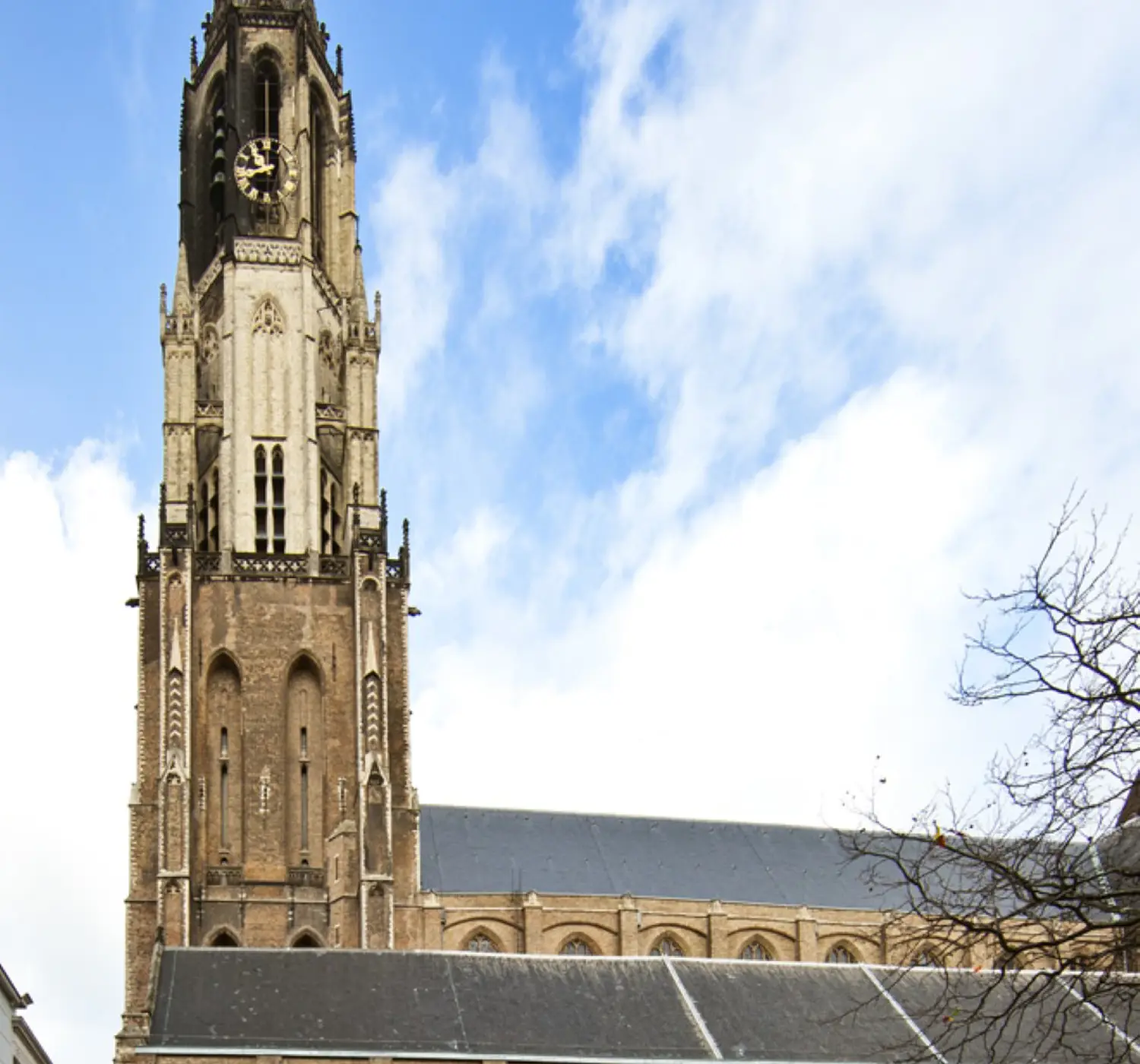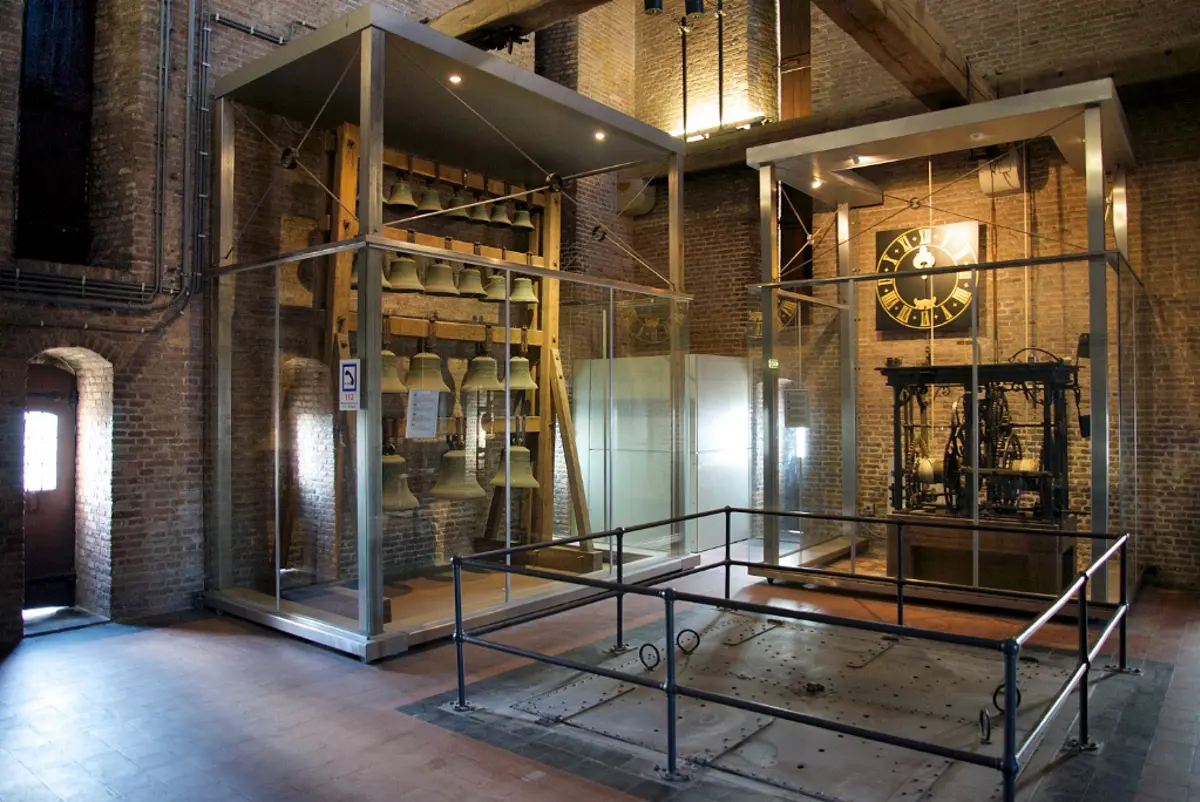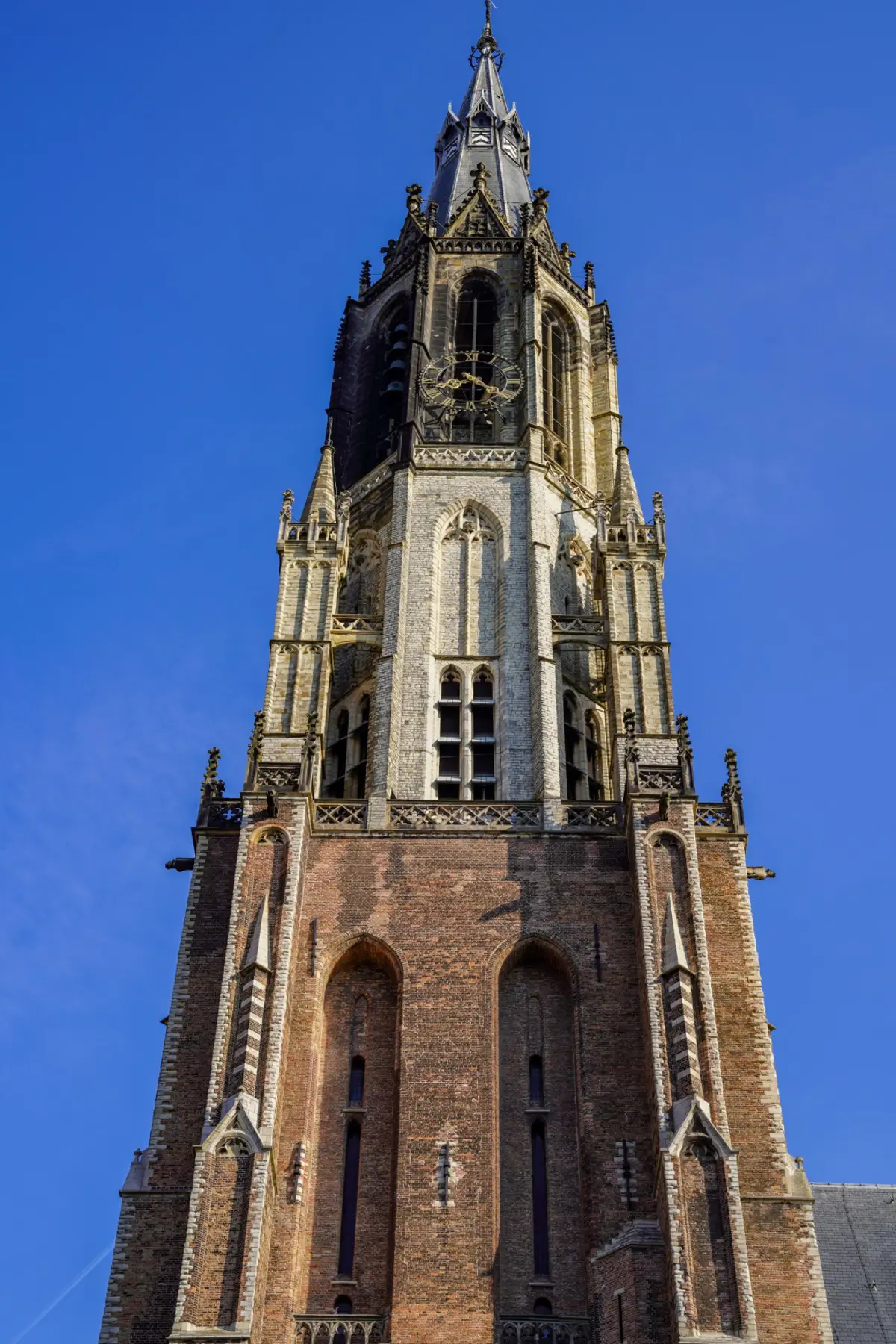History
For centuries, the tower of the Nieuwe Kerk has characterised the ‘face‘ of Delft. After several renovations the tower has reached its current status – 108.75 metres high – making it the second tallest church tower in the Netherlands.

Science
It was from this tower that scholars Simon Stevin and Jan Cornets de Groot (father of legal scholar Hugo) conducted their famous drop tests. Using two lead balls - one ten times heavier than the other - the scientists demonstrated that heavy and light objects of the same size fall equally fast.
Not infinite
On 6 September 1496, a hundred years after construction of the stone church began, the tower was completed. At the top, they had installed a giant 'apple': the symbol of infinity. However, the tower's existence proved to be anything but infinite, as it was completely destroyed as early as the city fire of 1536.
Lightning
The spire was replaced by a new one - this time without an 'apple' - and it seemed that the tower was finally finished. At the end of the nineteenth century, however, fate struck again: lightning. In response, the well-known architect Pierre Cuypers designed the current spire in 1872.
Acid rain
Since then, the tower of the New Church has remained intact. While the blackened top suggests that a big fire has raged inside it, nothing could be further from the truth; Bentheimer sandstone was used for this second octagon, which becomes increasingly darker due to weathering (acid rain). There is no point in cleaning it.
Discover more about the Tower of the Nieuwe Kerk

History
For centuries, the tower of the Nieuwe Kerk has characterised the ‘face‘ of Delft. After several renovations the tower has reached its current status – 108.75 metres high – making it the second tallest church tower in the Netherlands.

Carillon
Several times a day, a loud clanging concert from the carillon in the tower of the Nieuwe Kerk rings out over Delft's city centre. The carillon automatically plays a different tune every quarter, half and full hour. Moreover, this unique instrument is played live at set times by the city carillonneur.

Climb the tower
You can climb the second highest church tower in the Netherlands, which was twice set ablaze by lightning and from which scientists tested the theory of gravity!
